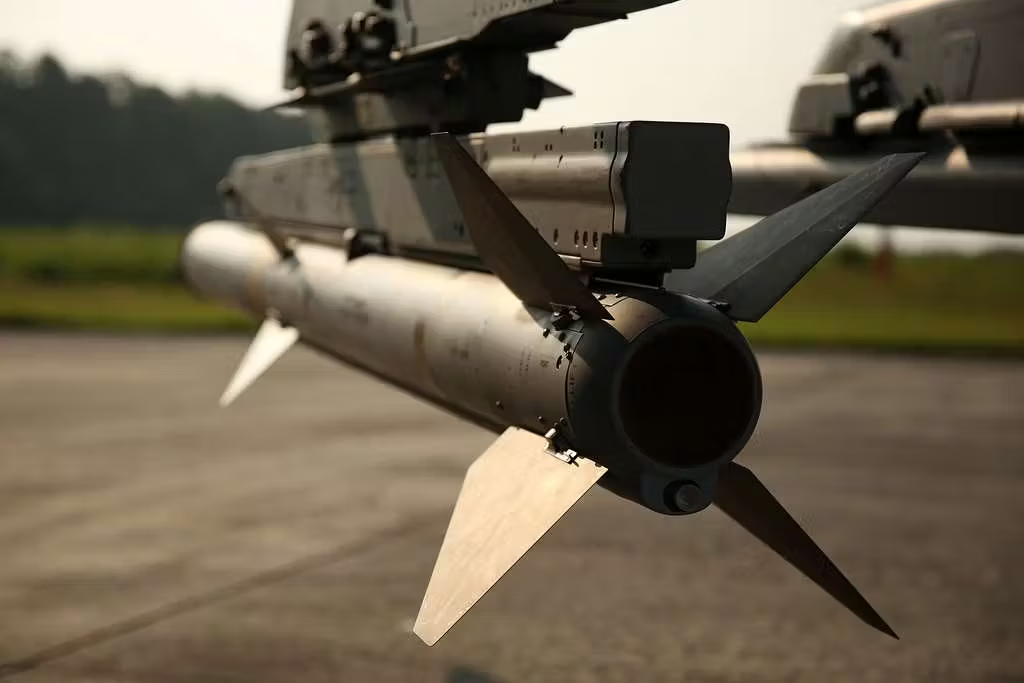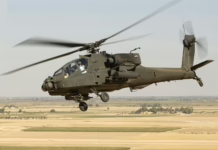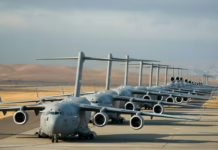The Air Force has issued a request for information seeking proposals for two new missile concepts that could transform its aerial combat capabilities while addressing cost concerns.
The U.S. Air Force is looking for new options for air-to-air missiles that would be cheaper and potentially smaller while maintaining maximum range capabilities, according to a recent request for information (RFI) issued by the Air Force Material Command.
The RFI outlines two distinct missile requirements that could significantly enhance the Air Force’s aerial combat capabilities. The first requirement calls for a low-cost weapon similar in size to the current Raytheon AIM-120 Advanced Medium Range Air-to-Air Missile (AMRAAM), but featuring maximum range performance.
“Industry is also encouraged to provide low-cost solutions for the missile at half the size of an AMRAAM to double aircraft loadout while maximising range in the design,” states the RFI.
This pursuit of smaller yet equally capable missiles comes at a time when the USAF already has a secretive missile in development – the Lockheed Martin AIM-260 Joint Advanced Tactical Missile, which is intended to supplement or replace the AIM-120.
A missile half the size of the AMRAAM could effectively double the air-to-air missile capacity of combat aircraft, thereby increasing their combat endurance. Additionally, smaller collaborative combat aircraft would be able to carry more of these weapons.
The push for miniaturized missiles reflects the evolving nature of modern air warfare, which is increasingly characterized by masses of cheap one-way attack drones, such as Iran’s Shahed-136, and the proliferation of other airborne targets beyond traditional combat aircraft.
Cost efficiency is a key consideration for both missile concepts. The RFI emphasizes a desire to “maximise the reuse of existing components.”
This initiative comes amid strong international demand for American air-to-air missiles. On May 2, the U.S. Defense Security Cooperation Agency (DSCA) announced the approval of a potential sale of 1,000 AIM-120C-8 AMRAAMs to Saudi Arabia valued at $3.5 billion.
Other countries approved for substantial AMRAAM purchases this year include Poland, Australia, and Japan. Including Saudi Arabia, 2025 has seen the DSCA announce potential sales of 3,000 advanced versions of the AMRAAM – specifically the AIM-120C-8/D3 variants – totaling $9.5 billion.

Key Takeaways
- The USAF is pursuing two new air-to-air missile concepts: one similar in size to the AMRAAM but cheaper, and another half the size but with maximum range.
- A half-sized missile could potentially double aircraft loadout capacity, significantly increasing combat capabilities.
- The initiative reflects the changing nature of aerial warfare, with increasing threats from drones and non-traditional airborne targets.
- International demand for U.S. air-to-air missiles remains strong, with potential sales of advanced AMRAAMs reaching $9.5 billion in 2025.
- The Air Force wants to maximize the reuse of existing components to keep costs down.







